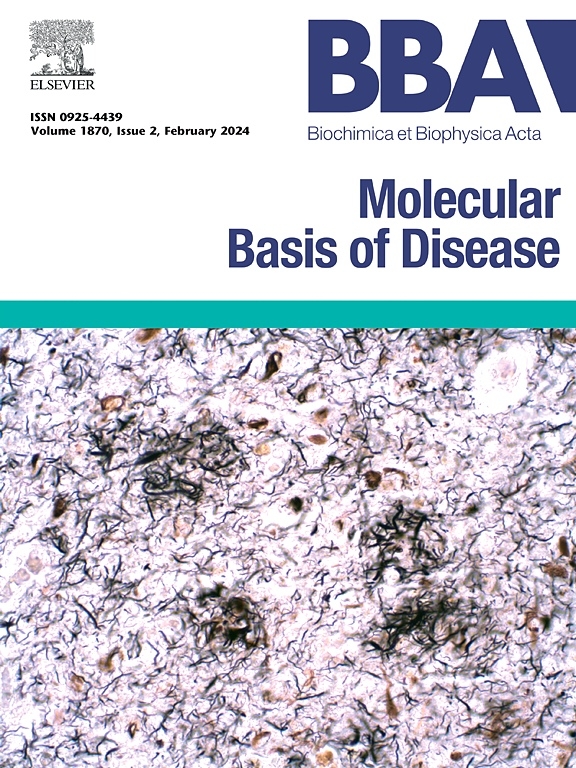Lipidomics-driven drug discovery and delivery strategies in glioblastoma
IF 4.2
2区 生物学
Q2 BIOCHEMISTRY & MOLECULAR BIOLOGY
Biochimica et biophysica acta. Molecular basis of disease
Pub Date : 2024-12-23
DOI:10.1016/j.bbadis.2024.167637
引用次数: 0
Abstract
With few viable treatment options, glioblastoma (GBM) is still one of the most aggressive and deadly types of brain cancer. Recent developments in lipidomics have demonstrated the potential of lipid metabolism as a therapeutic target in GBM. The thorough examination of lipids in biological systems, or lipidomics, is essential to comprehending the changed lipid profiles found in GBM, which are linked to the tumor's ability to grow, survive, and resist treatment. The use of lipidomics in drug delivery and discovery is examined in this study, focusing on how it may be used to find new biomarkers, create multi-target directed ligands, and improve drug delivery systems. We also cover the use of FDA-approved medications, clinical trials that use lipid-targeted medicines, and the integration of lipidomics with other omics technologies. This study emphasizes lipidomics as a possible tool in developing more effective treatment methods for GBM by exploring various lipid-centric techniques.
脂质组学驱动的胶质母细胞瘤药物发现和递送策略。
由于几乎没有可行的治疗方案,胶质母细胞瘤(GBM)仍然是最具侵袭性和致命性的脑癌之一。脂质组学的最新进展已经证明了脂质代谢作为GBM治疗靶点的潜力。彻底检查生物系统中的脂质,或脂质组学,对于理解在GBM中发现的脂质谱的变化是必不可少的,这与肿瘤的生长、存活和抵抗治疗的能力有关。本研究探讨了脂质组学在药物传递和发现中的应用,重点是如何使用它来发现新的生物标志物,创建多靶点定向配体,以及改进药物传递系统。我们还涵盖了fda批准的药物的使用,使用脂质靶向药物的临床试验,以及脂质组学与其他组学技术的整合。本研究强调通过探索各种以脂质为中心的技术,脂质组学可以作为开发更有效的GBM治疗方法的可能工具。
本文章由计算机程序翻译,如有差异,请以英文原文为准。
求助全文
约1分钟内获得全文
求助全文
来源期刊
CiteScore
12.30
自引率
0.00%
发文量
218
审稿时长
32 days
期刊介绍:
BBA Molecular Basis of Disease addresses the biochemistry and molecular genetics of disease processes and models of human disease. This journal covers aspects of aging, cancer, metabolic-, neurological-, and immunological-based disease. Manuscripts focused on using animal models to elucidate biochemical and mechanistic insight in each of these conditions, are particularly encouraged. Manuscripts should emphasize the underlying mechanisms of disease pathways and provide novel contributions to the understanding and/or treatment of these disorders. Highly descriptive and method development submissions may be declined without full review. The submission of uninvited reviews to BBA - Molecular Basis of Disease is strongly discouraged, and any such uninvited review should be accompanied by a coverletter outlining the compelling reasons why the review should be considered.

 求助内容:
求助内容: 应助结果提醒方式:
应助结果提醒方式:


